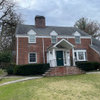stucco vs. grancrete
We have a vacation home in Sun Valley Idaho and were preparing to replace the stucco following several hard winters. We heard about the new product grancrete and hoped that it would last much longer than stucco as well as being impervious to water with the free-thaw cycle. Our home would be the first to have this product applied as far as we knew. In the spring and summer of 2007 we removed all of the existing stucco finish coat. A base coat of grancrete was applied. We found it time-consuming and difficult but the product has impressive properties, one of which is the ability to give localized structural strength to the wall surface.
A problem with the grancrete product is the finish coat. We have used several methods to apply the finish coat, always with the help of the local grancrete distributor. In every case we have experienced cracking or efflorescence. We also have noted problems with the product's ability to consistently receive any colorant or glaze. We are hopeful that someone out there has had similar problems that they have been able to correct. The company states that there may be a problem with the purity of the ingredients and also the problem may be solved by using a new improved sprayer.
Our decision time will be coming when the weather warms. We are receiving no progress reports as yet from the company regarding improvements. Communications are definitely in one direction. In essence we are now forced to look towards regular stucco as the answer to the cracking problem. Hairline cracks open into larger fissures of one to 2 mm in width. Any suggestions would be appreciated because I think this material has the potential to be useful in the future









sierraeast
dallasbill
Related Professionals
Oakley Architects & Building Designers · Providence Architects & Building Designers · Town and Country Architects & Building Designers · Home Gardens Home Builders · Riverton Home Builders · Arlington General Contractors · Ashtabula General Contractors · Clinton General Contractors · Dardenne Prairie General Contractors · Endicott General Contractors · Fremont General Contractors · Millbrae General Contractors · Peoria General Contractors · Signal Hill General Contractors · Baileys Crossroads General Contractorssierraeast
stuccojon
sierraeast
robin0919
stuccojon
idgrancrete
sinyen